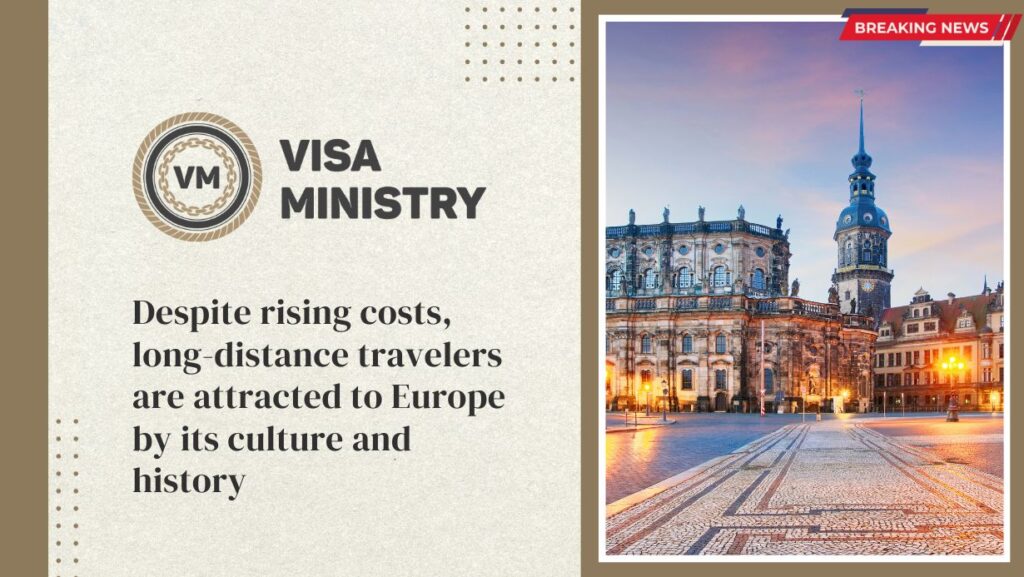This autumn, long-distance travelers are eager to discover European places, with travel intentions from major markers maintaining stable or rising in comparison to previous year. Travel to Europe has becoming increasingly popular, especially in China. In spite of worries about expensive travel and increased airfares, 74% of Chinese survey participants want to travel to Europe between September and December 2023. This reflects a significant 10% increase from the same time last year and a 9% increase over the last travel season before China closed its borders to travel, which was in the fall of 2019. Despite rising inflation, travel interest climbed marginally in both the US (+3%) and Canada (+2%).
In Australia and Brazil, travelers’ intentions to visit Europe have somewhat decreased from the previous year. Australia saw a 3% decline, which may be attributed to travelers’ growing desire to visit new places and the summer months in the Southern Hemisphere, which make domestic travel more alluring. Brazil also had a 3% decline, but opinion is still positive there, with more than half (52%) of respondents saying they want to visit Europe.
When compared to the same time in 2022, Japanese respondents’ travel intentions to Europe increased significantly, by 12%. Even still, Japan continues to be the most cautious market among all those questioned, with only 25% of respondents planning to go to Europe in the next few months.
This is supported by the most recent Long-Haul Travel Barometer (LHTB), which the European Travel Commission (ETC) and Eurail BV released today. In six significant long-haul markets—Australia, Brazil, Canada, China, Japan, and the United States—the LHTB tracks travelers’ plans to visit Europe. The most recent issue discusses travel behavior between September 2023 and December 2023.
Following the release of the LHTB 3/2023, ETC President Miguel Sanz made the following statement: “After a protracted period of disruption due to the Covid pandemic, Europe is reestablishing its connection with Asian tourists.” Our allure to long-distance travelers continues to be strong, with Europe’s ageless culture and history serving as the main pull. It’s very exciting to observe how rail travel is becoming more and more popular, and how tourists are becoming more interested in slow travel. It’s critical that we focus especially on the responsible growth of the tourism business right now more than ever.
The travel plans of tourists are changing as a result of high prices.
Overall, there is still a high level of interest in visiting Europe, but in all six markets, this interest is mostly hampered by high travel costs. This is particularly true in Brazil and Australia, where 45% and 40% of visitors, respectively, are deterred from taking a vacation in Europe because of the high costs. The perceived affordability of services and experiences inside the location is therefore becoming more important to travelers across all markets (32% vs. 28% last year).
Tourists are implementing new tactics to get the most of their experience while staying within their budget as travel-related expenditures rise. The most common strategy is to cut back on shopping spending (35%), a strategy that is especially well-liked by respondents from Canada, Australia, and Japan. Use of reward programs and reasonably priced all-inclusive packages are two further new spending trends that 30% of respondents in all regions, but are especially popular in Brazil and China, are considering.
The culture and history of Europe particularly appeal to long-distance travelers
In five of the six markets examined, travelers cite culture and history as Europe’s top draws. China is an exception, where tourists’ keen interest in culture and history is surpassed only by their desire for culinary and urban experiences. Notably, slow travel is becoming more popular overall this fall (+7% compared to 2022), particularly with visitors from Japan, Australia, Canada, and the US.
Long-distance travelers are also drawn to well-known locations this fall. Compared to the same period in 2022, a growing number of respondents (+6%) said that they are most interested in visiting places that are home to famous landmarks in Europe.
Another important factor that influences where travelers choose to go is the weather. Chinese visitors place the greatest emphasis on climate factors (39%), followed by Australian and Brazilian visitors (both at 34%).
To get between European destinations, travelers prefer trains and inexpensive flights.
An intriguing shift in preferred modes of transportation between destinations has been seen among Australian travelers. While flying continues to be the most popular option, interest in rail passes has significantly increased (+8%) and that of bus travel has slightly increased (+2%).
With 34% of poll participants inclined to purchase a rail pass and 32% interested in at least one train ticket, rail travel remains the top means of transportation for Canadian tourists. Despite previously favoring air travel, US travelers are now becoming more interested in rail transportation due to its price and efficiency in terms of trip durations.
Despite rail’s strong position as a long-distance travel alternative, low-cost airplanes remain the most widely used. Although rail has historically been the primary mode of transportation for Brazilians, interest in low-cost aircraft has increased by 13% in that country. The Canadian market, where the appeal of low-cost flights increased by 9%, exhibits the same pattern.
Source- Travel daily

